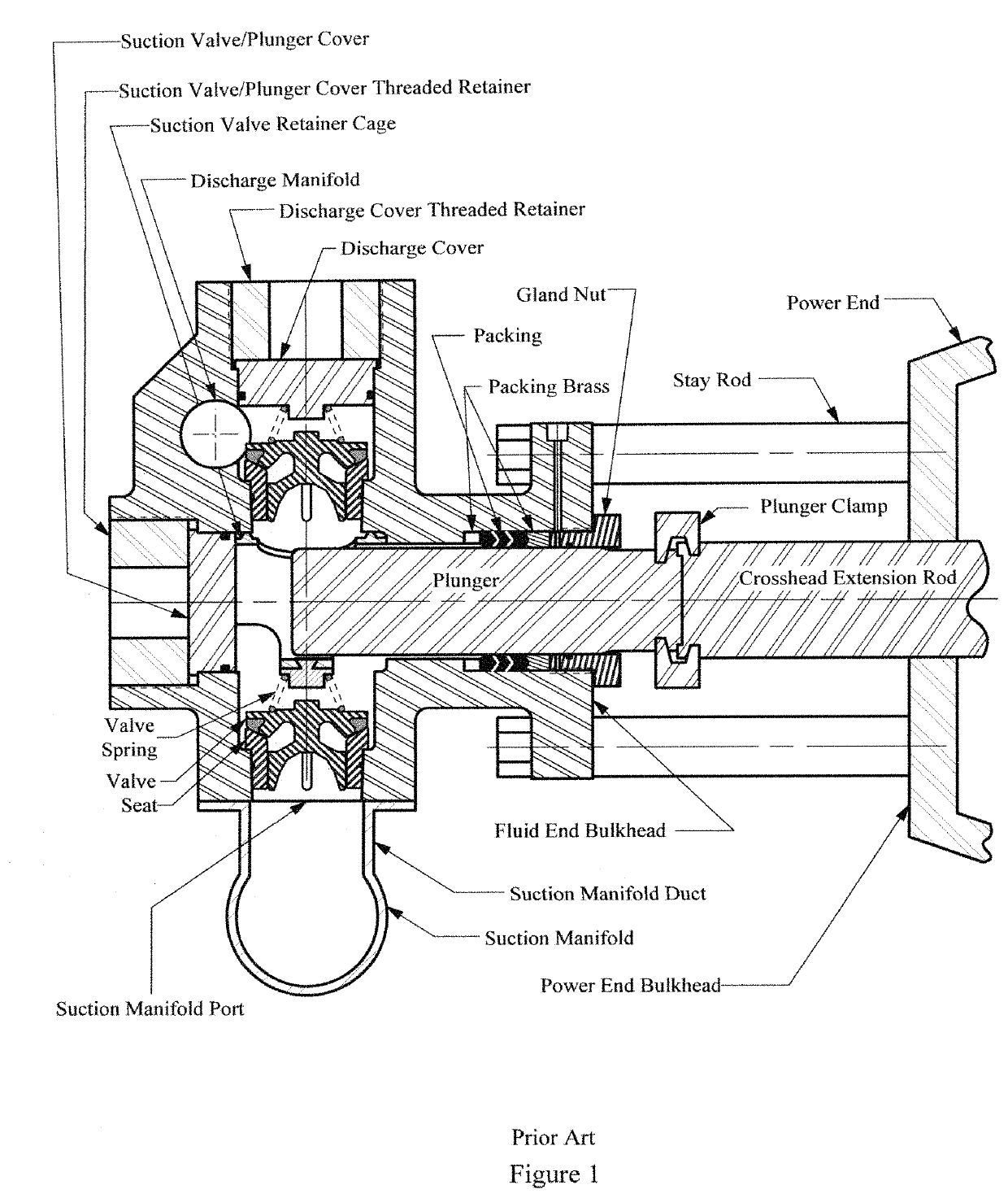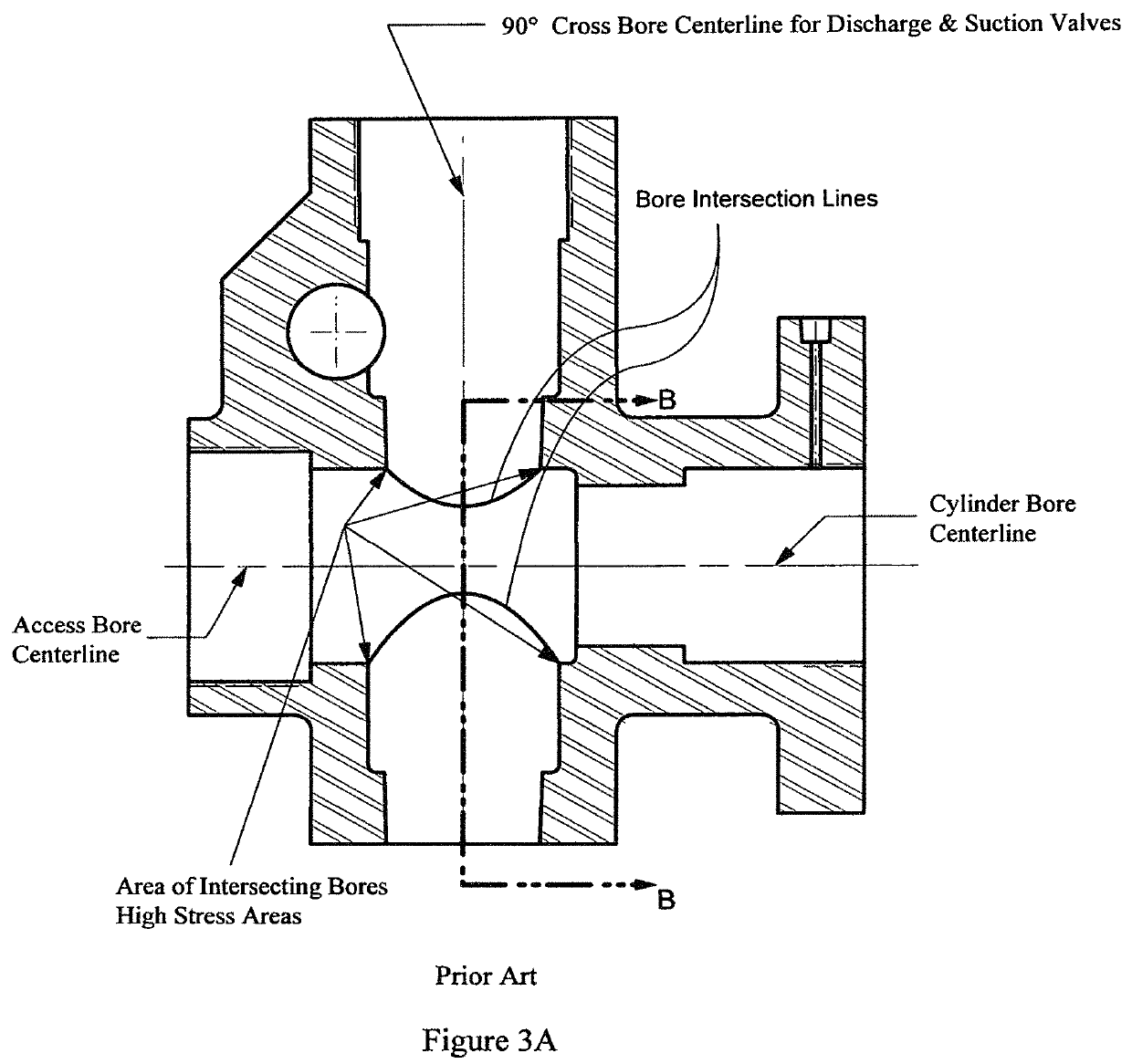Pump housing with inline valve
a plunger pump and inline valve technology, applied in the direction of pump components, positive displacement liquid engines, liquid fuel engine components, etc., can solve the problems of multiple major cross-bore blocks and y-blocks, the individual bores of the plunger pump fluid end housing are subject to fatigue, and the feeding of the plunger bore cavity, etc., to reduce stress, reduce stress, and eliminate the loss of fluid energy
- Summary
- Abstract
- Description
- Claims
- Application Information
AI Technical Summary
Benefits of technology
Problems solved by technology
Method used
Image
Examples
Embodiment Construction
[0040]FIG. 8 schematically illustrates a cross-section of an embodiment of the fluid end housing assembly 100 of the present invention showing its connection to a power section by stay rods. As opposed to fluid end housing of the prior art as illustrated in FIG. 1, fluid end housing 1 of the present invention is configured with the suction manifold 5 mounted in a position on the fluid end housing opposite the power end of the pump.
[0041]The housing 1 of the present invention features multiple fluid chambers 2 with each chamber 2 containing multiple bores. The plunger 310 may be of a two-piece design as illustrated in FIG. 8 with a plunger pressure end 311 and a plunger clamp end 312. A two-piece plunger facilitates easier maintenance by field mechanics. Alternately a one-piece plunger, not shown, could be utilized. However, a one-piece plunger would require removal of the fluid end housing assembly 100 from the power end assembly for routine maintenance on components of assembly 100...
PUM
 Login to View More
Login to View More Abstract
Description
Claims
Application Information
 Login to View More
Login to View More - R&D
- Intellectual Property
- Life Sciences
- Materials
- Tech Scout
- Unparalleled Data Quality
- Higher Quality Content
- 60% Fewer Hallucinations
Browse by: Latest US Patents, China's latest patents, Technical Efficacy Thesaurus, Application Domain, Technology Topic, Popular Technical Reports.
© 2025 PatSnap. All rights reserved.Legal|Privacy policy|Modern Slavery Act Transparency Statement|Sitemap|About US| Contact US: help@patsnap.com



